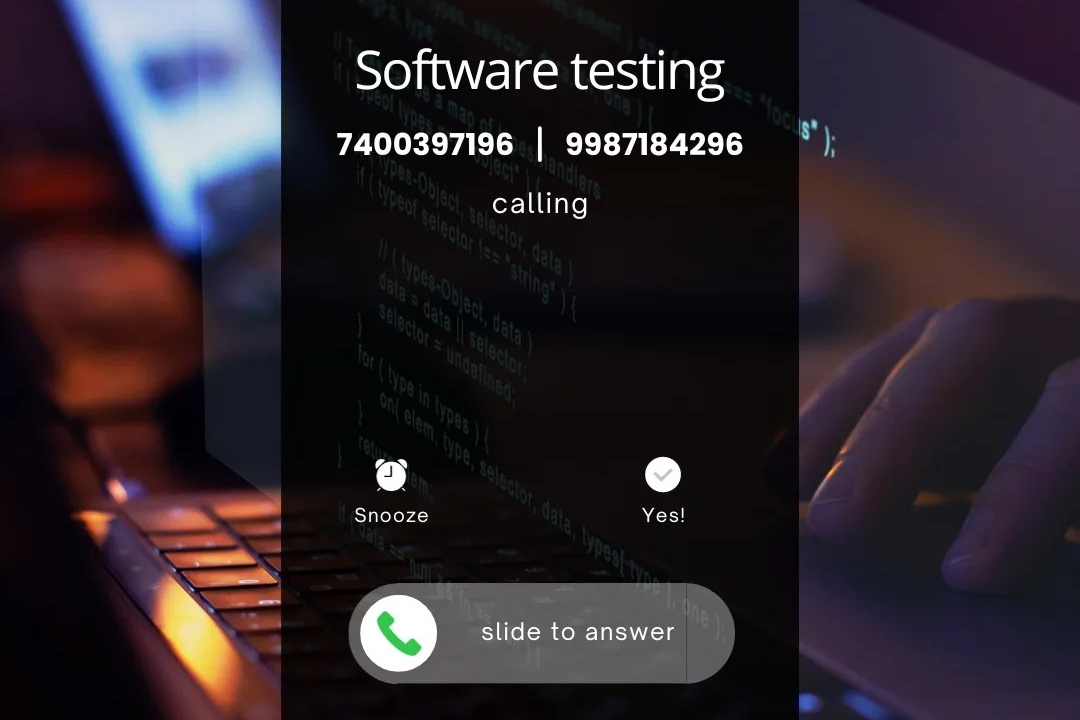Defect Life Cycle Manual Testing
The defect life cycle in manual testing is a structured process that outlines the various stages a d
Defect Life Cycle Manual Testing
The defect life cycle in manual testing is a crucial framework that helps teams efficiently manage and resolve software defects as they arise. By delineating the progression of a defect from its identification to closure, this cycle enhances communication between development and quality assurance teams, allowing for systematic tracking and prioritization of issues. Understanding the defect life cycle is essential for improving defect resolution times and ensuring that software meets quality standards before release. Ultimately, it leads to better product quality, reduced costs associated with post-release fixes, and increased customer satisfaction, making it an indispensable aspect of the software development process.
To Download Our Brochure: https://www.justacademy.co/download-brochure-for-free
Message us for more information: +91 9987184296
The defect life cycle in manual testing is a crucial framework that helps teams efficiently manage and resolve software defects as they arise. By delineating the progression of a defect from its identification to closure, this cycle enhances communication between development and quality assurance teams, allowing for systematic tracking and prioritization of issues. Understanding the defect life cycle is essential for improving defect resolution times and ensuring that software meets quality standards before release. Ultimately, it leads to better product quality, reduced costs associated with post release fixes, and increased customer satisfaction, making it an indispensable aspect of the software development process.
Course Overview
The ‘Defect Life Cycle in Manual Testing’ course provides a comprehensive understanding of how defects are identified, tracked, and resolved throughout the software development process. Participants will explore each stage of the defect life cycle, including creation, classification, assignment, resolution, and closure, while gaining insights into effective communication and collaboration between testing and development teams. Through practical examples and real-time projects, learners will develop skills to efficiently manage defects, prioritize testing efforts, and ensure high-quality software delivery. This course is ideal for aspiring testers and quality assurance professionals seeking to enhance their expertise in defect management and contribute effectively to project success.
Course Description
The “Defect Life Cycle in Manual Testing” course offers an in-depth exploration of the various stages involved in managing defects during the software development process. Participants will learn how to identify, classify, and track defects from their discovery to resolution and closure. Through real-time projects, the course emphasizes practical skills in effective communication between testing and development teams, ensuring timely defect resolution and overall software quality. Ideal for aspiring QA professionals, this course equips learners with essential knowledge and techniques to manage defects efficiently and contribute to successful software delivery.
Key Features
1 - Comprehensive Tool Coverage: Provides hands-on training with a range of industry-standard testing tools, including Selenium, JIRA, LoadRunner, and TestRail.
2) Practical Exercises: Features real-world exercises and case studies to apply tools in various testing scenarios.
3) Interactive Learning: Includes interactive sessions with industry experts for personalized feedback and guidance.
4) Detailed Tutorials: Offers extensive tutorials and documentation on tool functionalities and best practices.
5) Advanced Techniques: Covers both fundamental and advanced techniques for using testing tools effectively.
6) Data Visualization: Integrates tools for visualizing test metrics and results, enhancing data interpretation and decision-making.
7) Tool Integration: Teaches how to integrate testing tools into the software development lifecycle for streamlined workflows.
8) Project-Based Learning: Focuses on project-based learning to build practical skills and create a portfolio of completed tasks.
9) Career Support: Provides resources and support for applying learned skills to real-world job scenarios, including resume building and interview preparation.
10) Up-to-Date Content: Ensures that course materials reflect the latest industry standards and tool updates.
Benefits of taking our course
Functional Tools
1 - JIRA
JIRA is one of the most widely used project management tools in software development and defect tracking. It allows teams to create, prioritize, and manage defect tickets throughout the entire defect life cycle. JIRA’s user friendly interface enables testers to log defects quickly, assign them to developers, and track their resolution in real time. The tool also provides robust reporting features, ensuring that teams can monitor defect trends and resolution times effectively. By learning to work with JIRA, students gain essential skills that enhance their ability to participate in Agile methodologies, making them valuable assets to any QA team.
2) Bugzilla
Bugzilla is an open source defect tracking system that supports a wide range of software development projects. Known for its flexibility and customizable features, Bugzilla provides powerful capabilities for managing defects, including advanced search functions, automated notifications, and an extensive reporting system. It empowers teams to maintain and monitor defect statuses efficiently. In the training program, students will learn to utilize Bugzilla’s features to track defects, facilitate communication among team members, and ensure that all issues are addressed promptly, contributing to overall software quality improvement.
3) Trello
Trello is a visual collaboration tool that employs boards, lists, and cards to help teams manage their projects, including defect tracking. Students will learn to utilize Trello’s simple drag and drop interface to prioritize and monitor defects throughout the life cycle easily. The ability to create checklists, add due dates, and assign tasks makes Trello an effective tool for maintaining clarity and organization. By integrating Trello into their defect management processes, students can better manage their workflow, collaborate more effectively with teams, and enhance their productivity when handling multiple defects simultaneously.
4) Microsoft Excel
Excel is a powerful spreadsheet application often used for defect tracking due to its versatility and data manipulation capabilities. Students will learn to create and manage defect logs using various functionalities, such as filtering, sorting, and conditional formatting. Excel allows for extensive data analysis, helping students identify patterns in defect occurrences and resolutions. Additionally, by mastering Excel, participants can generate custom reports, which is essential for communicating defect metrics to stakeholders, thereby strengthening their analysis and reporting skills in the context of defect management.
5) Postman
Postman is an API testing tool that helps teams ensure that their APIs are functioning correctly, making it instrumental in the defect life cycle. Students will gain hands on experience in creating and executing API tests, tracking defects related to API functionality, and understanding how these impacts overall system performance. This tool’s features allow for automated testing and detailed reporting, enabling testers to identify defects efficiently and verify fixes. By incorporating Postman into their training, students enhance their testing capabilities and become proficient in handling defects associated with backend services.
6) Slack
Slack is a team collaboration and communication tool essential for modern software development environments. In the context of defect management, students will learn how to use Slack for real time communication regarding defect statuses and resolutions. The integration of channels for specific projects allows teams to stay updated on defect related discussions and notifications, enhancing collaboration. Students will discover how Slack can streamline communications, enabling faster decision making around defect priority and resolution, thus contributing to more effective teamwork and improved quality assurance practices.
7) Asana
Asana is a project management tool that facilitates task tracking and team collaboration. In defect management, students will learn to create tasks related to defects, assign them to team members, and set deadlines to prioritize resolutions. With Asana's user friendly interface, visual project management features such as timelines and boards enable teams to track the progress of defect resolution easily. This training will enhance students' ability to manage workflows effectively, ensuring that defects are addressed in a timely manner and improving overall project outcomes.
8) GitHub Issues
GitHub is widely used by developers for version control and code hosting, and its Issues feature is useful for defect tracking. Students will learn to create, assign, and manage issues directly within their code repositories, facilitating seamless communication between developers and testers. By using GitHub Issues, students can link defects to specific code changes, making it easier to trace problems back to their source. This integration of defect tracking and version control enhances collaboration and accountability among team members, ultimately leading to higher code quality.
9) Rally (formerly CA Agile Central)
Rally is a project management tool specifically designed for Agile software development. In the context of defect management, students will learn to create user stories that include defect fixes, track their progress, and maintain visibility on resolution timelines. Rally’s reporting and analytics features provide insights into defect trends, enabling teams to continuously improve their processes. Training with Rally equips students with critical skills that align with Agile methodologies and enhances their capabilities in managing defect resolutions within a fast paced development environment.
10) Monday.com
Monday.com is a versatile project management platform that uses a visual interface to help teams manage tasks and track defects efficiently. Students will learn to create boards tailored for tracking defects, allowing them to assign ownership, due dates, and status updates. The platform’s automation features can help streamline repetitive tasks, ensuring defects are prioritized and monitored effectively. With its customizable workflows, students will gain skills in adapting the tracking process to meet the needs of specific projects, thus enhancing their problem solving capabilities.
11 - TestRail
TestRail is a comprehensive test case management tool that also supports defect tracking. Students will discover how to create test cases aligned with defect reports, facilitating better visibility of defects identified during testing. TestRail’s integration with other tools allows for seamless management of defects through the testing process. Training with TestRail enhances students' ability to document, prioritize, and track defect resolutions, fostering a more organized testing approach that supports higher quality software delivery.
12) Zebra
Zebra is a lesser known but effective defect tracking tool that offers simple yet powerful defect management features. Students will learn to track defects through a straightforward interface, facilitating fast updates and notifications about defect statuses. Zebra’s capabilities for document management also provide an avenue for attaching necessary documentation to defects, such as screenshots or logs. This training will help students develop a keen eye for documentation best practices, ensuring that all relevant information accompanies defect reports for more efficient resolutions.
13) Azure DevOps
Azure DevOps provides a comprehensive suite for software development, including features for planning, collaboration, and defect tracking. In this training, students will learn how to integrate defect tracking within the Agile workflow, create dashboards for real time insights, and utilize Azure Boards to manage defects. The integration of defect tracking with CI/CD pipelines in Azure DevOps ensures that defects are addressed proactively throughout the development lifecycle, preparing students to thrive in environments that emphasize continuous delivery.
14) MantisBT
Mantis Bug Tracker (MantisBT) is an open source issue tracker that provides a simple interface for defect management. Students will learn how to customize MantisBT to fit specific project requirements, including setting notification rules and user permissions. MantisBT’s reporting features help teams identify common defect types and frequency, leading to better defect management strategies. Training in MantisBT equips students with the ability to tailor defect tracking processes, making them versatile candidates in various software development settings.
15) Google Sheets
Google Sheets serves as a collaborative tool for managing defect logs. Students will learn to utilize its features for real time collaboration, allowing teams to track defects and updates simultaneously. The ability to create charts and graphs for visual representation enables better analysis of defect trends, while version history tracks changes over time. By mastering Google Sheets, students can enhance their data organization skills and foster collaboration among team members, making it an accessible option for small to medium sized teams handling defect tracking.
Browse our course links : https://www.justacademy.co/all-courses
To Join our FREE DEMO Session:
This information is sourced from JustAcademy
Contact Info:
Roshan Chaturvedi
Message us on Whatsapp: +91 9987184296
Email id: info@justacademy.co
How Is React Native Different From Flutter Medium












